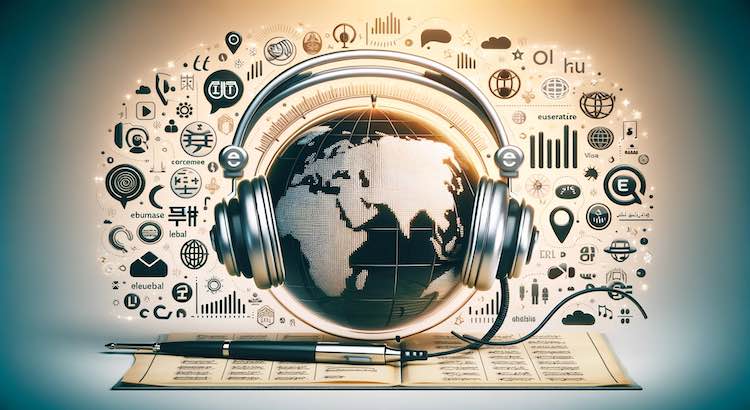How Audio Transcription Services Improve Language Learning
Learning new languages is more important now than ever before. In a globalized world, being able to communicate across cultures supports international business, travel, and personal growth. According to a 2023 survey, over 65% of employers value multilingual skills for workplace success (Statista, 2023). Yet, language learners often struggle with understanding spoken words and getting pronunciation right. Fortunately, audio transcription services can help break down these barriers.
Why Use Transcription in Language Learning?
Audio transcription services turn spoken words into written text. This makes it easier for language learners to:
- Connect sounds to spelling.
- Catch new words or phrases.
- Understand speech in different accents or at various speeds.
By using professional transcription services, students can see exactly what is being said. This helps when learning languages with tricky spelling or unfamiliar sounds.
Boosting Listening Skills
Listening to speech while reading its automated transcript makes it much easier to pick out words. If you struggle to understand quick speakers or new accents, reading along helps you follow the conversation. Research from 2022 found that using transcripts alongside audio increased learners’ retention by up to 30% (ELT Journal, 2022).
How Transcription Builds Vocabulary and Grammar
Transcripts give language learners real-life examples of how words are used. You practice vocabulary in context, not just by memorizing a list. With a written transcript, it’s easier to:
- Spot new words in meaningful sentences.
- Notice how sentences are put together.
- Study grammar patterns that might be hard to catch by ear.
Consistent use of high-quality transcription proofreading services ensures that what you’re reading is accurate and reliable.
Personalized, Engaging Learning Experience
Learning with Content That Interests You
One of the best things about transcription services is flexibility. You can transcribe:
- Podcasts
- Lecture recordings
- TV and movie dialogues
- Real conversations
Anything you enjoy listening to can become a language lesson. People learn better when the material interests them (TESOL Quarterly, 2021).
Translation for Beginners
For those just getting started, pairing a transcript with a translation makes a big difference. Text translation services allow students to see both the original text and its translation side by side. This helps you compare words and understand how expressions transfer from one language to another.
Advanced learners can benefit from audio translation to practice both comprehension and speaking skills.
Making Language Learning Accessible
Audio transcription helps people who are deaf or hard of hearing participate in language education. Providing closed caption and subtitling services ensures that everyone can access learning materials. In the United States, about 15% of adults report some trouble hearing (CDC, 2020).
Learning Anywhere, Anytime
With transcripts stored on your phone or computer, you can study at your convenience. Whether you’re commuting, sitting in a café, or relaxing at home, you always have access to both audio and text. Learning at your own pace gives you control over your progress.
The Role of Technology in Modern Language Learning
Recent advances in AI and machine learning have improved the speed and accuracy of transcription services. AI transcription subscriptions now offer:
- Real-time transcription for live events
- Automatic translations
- User-friendly interfaces for searching and learning
Modern transcription technology opens up new ways for learners to interact with native speakers and media content (Forbes, 2023).
How to Get Started with Transcription Services
To boost your language skills, choose a trusted transcription provider. Look for:
- Customizable options—such as affordable pricing and different turnaround times
- Support for multiple languages
- Extra features like translations, proofreading, and captions
You can order transcription or order captions easily online. Compare captioning services pricing to find what fits your budget.
Conclusion: GoTranscript Supports Your Language Learning Journey
Audio transcription services are changing how we learn languages. They help you connect spoken and written words, grow your vocabulary, and master grammar—no matter your starting level. With accessible, flexible, and accurate transcription (and translation) support, learners have more tools than ever before.
GoTranscript offers a full suite of solutions for language learners. Whether you need basic transcriptions, subtitles, translations, or AI-powered services, GoTranscript can support your success. Start improving your listening, speaking, and comprehension skills today with GoTranscript’s transcription services.



















 Verified Order
Verified Order